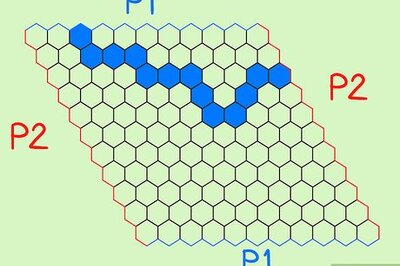
views
COIMBATORE: The genesis of the case is thus. Way back in 1987, immediately after the implementation of the Fourth Pay Commission recommendations, the Government of India had instructed all Centrally-funded organisations to give a one-time option to their employees to switch over from the Contributory Provident Fund cum Gratuity Scheme (CPFG) to the General Provident Fund cum Family Pension Scheme (GPF). For this, the government had fixed a cut-off date of September 30, 1987, with a default clause that if employees failed to exercise their option, they would automatically be shifted to the GPF scheme after the deadline expired. More importantly, the government said that after an employee intimated his/her option in writing, it would be irreversible. At that time, almost all employees of IITs decided to “irrevocably” remain under the CPFG scheme as it was more lucrative than the GPF option. At the IIT Madras, the extended deadline for exercising the option was December 19, 1990.However, with the fifth and sixth Pay Commissions recommending higher pay scales and retirement benefits for Central government staff, the faculty and non-teaching employees at the various older IITs decided to change their mind on their PF option.The IITs repeatedly requested the HRD ministry to relax the norms and allow their employees to opt for the lucrative GPF option. However, the Department of Training and Personnel vetoed the proposal and in 2002 even the IIT Council at its 37th meeting made it clear that such an option would not be allowed. While most of the older IITs that had discreetly allowed their employees to break the rule, fell in line, IIT-M alone chose to continue with the illegal switchovers. For several years this went undetected. However, last year, the CAG stumbled upon the irregularities.Interestingly, now there is an attempt to cover up the irregularities. In the electronic pay slips issued to employees in April last, the institute mentioned the PF account numbers of CPFG instead of GPF citing a frivolous reason — “for the purpose of calculation of interest and balance compilation.” Also pay slips were not issued due to “printer failure”.Why Is It Illegal?Under the CPFG scheme, a professor who retires gets back just the principal plus interest at the rate of eight per cent (prior to 1992 it was 12 per cent) on their PF contribution plus the employer’s contribution, which in the case of the IITs is the government’s contribution. In contrast, those under the GPF scheme are paid back the employee’s contribution to PF with interest. In the place of the employer’s contribution, a monthly pension at the rate of 50 per cent of the last 10 months’ basic pay plus Grade Pay plus DA is paid to the retired employee till his/her death and thereafter a lesser amount to his wife for lifetime.According to a whistleblower in the IIT Madras, the illustrative benefit of this works out thus: A typical professor, who had opted earlier in 1987 to stay back in the CPFG scheme, retired after completing 33 years of continuous services in IIT, any time after the implementation of the Sixth Pay Commission pay scales in IITs (with effect from January 1, 2006), would have received only around ` 9 lakh as government’s contribution to the CPFG. In addition, he would get the usual gratuity and his own accumulated contribution to the PF along with eligible interest. On the contrary if this professor is allowed to illegally switch over to the GPF scheme, from the date of his retirement he would not only receive his cumulative contribution to the PF but also a monthly pension of `52,000 from the government till his death. After his lifetime, his wife would be eligible to receive a Family Pension of Rs 15,000 a month till her death. Both these pensions are eligible for upward revision as and when the government revises the DA rates for its employees.In addition, the pensioner has an option to claim and receive a lump sum payment of 84 times of 40 per cent of his basic eligible pension at the time of retirement from the government, which approximately works out to Rs 9 lakh as on date. In such an eventuality, his pension will get revised to Rs 42,000 instead of Rs 52,000 till he attains the age of 75 years, and the full pension of Rs 52,000 will be restored on his attaining 75 years. In other words, had he not been permitted to switchover, the government’s pay out to him (in terms of the employer’s contribution to PF) would have been just 18 months of the pension money.




















Comments
0 comment